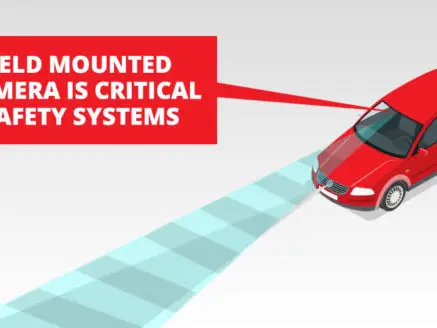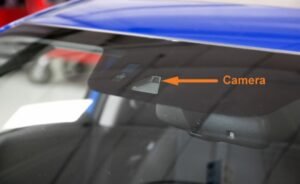
ADAS Windshield Calibration Services
Understanding the Importance of ADAS Lane Departure Warning System Calibrations
When to Calibrate Your Windshield’s Lane Departure Warning System
Calibrating the Lane Departure Warning System (LDWS) in your vehicle is crucial for maintaining its accuracy and functionality. One critical moment to schedule a calibration is after any work has been done on your vehicle’s windshield. Here’s why this is important:
Technology Integration:
Modern windshields often incorporate advanced sensors used by the LDWS to detect lane markings. When a windshield is replaced or repaired, these sensors can be disturbed or misaligned.
Why Calibration Matters
Calibration of the LDWS ensures that the system accurately identifies and reacts to lane departures. Here are a few key reasons why proper calibration is essential:
Safety Assurance:
A well-calibrated LDWS helps prevent accidents by correctly alerting you when your vehicle begins to drift out of its lane.
System Integrity:
Post-repair calibration guarantees that any technological adjustments to the windshield do not compromise the system’s functionality.
Ensuring that your LDWS is calibrated, especially following windshield services, supports both your safety and the reliable operation of your vehicle’s assistive driving features.
A little more in depth…
What are Windshield Camera Calibrations?
 In the modern automotive landscape, technology has revolutionized the driving experience through the integration of Advanced Driver Assistance Systems. These systems employ a variety of sensors, cameras, and radar technologies to enhance vehicle safety, improve driver awareness, and automate certain driving functions. One of the critical aspects of ensuring the optimal performance of ADAS is vehicle camera calibration. This process involves meticulously aligning and configuring the cameras and sensors that make up these systems to ensure their accuracy and reliability. In this comprehensive exploration, we delve into the intricacies of vehicle camera calibrations, their significance, and the impact they have on driving safety.
In the modern automotive landscape, technology has revolutionized the driving experience through the integration of Advanced Driver Assistance Systems. These systems employ a variety of sensors, cameras, and radar technologies to enhance vehicle safety, improve driver awareness, and automate certain driving functions. One of the critical aspects of ensuring the optimal performance of ADAS is vehicle camera calibration. This process involves meticulously aligning and configuring the cameras and sensors that make up these systems to ensure their accuracy and reliability. In this comprehensive exploration, we delve into the intricacies of vehicle camera calibrations, their significance, and the impact they have on driving safety.
The Role of ADAS and Cameras:
ADAS encompasses a range of technologies designed to assist drivers by providing warnings, alerts, and even autonomous interventions to prevent collisions and enhance overall driving safety. Cameras play a pivotal role in ADAS, serving as the eyes of the system. These cameras capture real-time data about the vehicle’s surroundings, such as lane markings, other vehicles, pedestrians, and road signs. This data is then processed by onboard computers, allowing the ADAS to make informed decisions and execute actions like lane keeping, adaptive cruise control, and emergency braking.
The Need for Vehicle Camera Calibrations:
For ADAS to function accurately and effectively, the cameras and sensors must have a precise understanding of their orientation and position within the vehicle. Even minor alterations, such as windshield replacements, suspension repairs, or collision repairs, can disrupt the alignment of these components. Such disruptions can lead to miscalibrated ADAS, resulting in inaccurate perceptions of the environment and, consequently, compromised safety.
The passage describes several Advanced Driver Assistance Systems (ADAS) designed to enhance vehicle safety and driver comfort. Here are the systems mentioned:
Lane Keeping Assist (LKA): This system helps in maintaining the vehicle within its lane. It automatically steers the car back if it starts to drift out of the lane without a turn signal.
Lane Departure Warning (LDW): LDW alerts the driver through sound or vibration if the vehicle begins to move out of its lane without activating the turn signal.
Forward Collision Alert (FCA): This technology monitors the distance between the driver’s vehicle and the vehicle in front. It provides visual and audio alerts if the gap decreases unsafely.
Collision Mitigation Braking System (CMBS): Working in a similar realm as the FCA, CMBS goes a step further by applying the brakes automatically if the driver fails to respond to the initial collision warning.
Adaptive Cruise Control (ACC): ACC adjusts the vehicle’s speed to maintain a safe following distance from the car ahead, ensuring comfortable and stress-free highway driving.
Each of these systems plays a crucial role in preventing accidents and enhancing the overall safety mechanisms of a modern vehicle.
Understanding When Your Car’s ADAS Needs Calibration
It’s crucial to keep your car’s Advanced Driver Assistance Systems (ADAS) finely tuned and properly calibrated. Calibration is vital for ensuring these systems function as intended, keeping you safe on the road. Here’s how you can determine if your car’s ADAS may need a professional adjustment.
1. Drifting or Pulling during Rides
If you notice your vehicle drifting or pulling to one side consistently while driving, it’s a potential sign of misaligned ADAS sensors. These sensors are designed to keep your car centered within lane markings. Any deviation from this could suggest a need for calibration.
2. Malfunctioning ADAS Features
Pay attention to how the ADAS features behave. Are the collision avoidance alerts acting erratically? Does the automatic braking intervene unnecessarily or fail to engage when expected? These irregularities often point to a problem with sensor alignment.
3. Post-Repair Issues
Have you had recent repairs or mechanical services on your vehicle, such as wheel alignment or tire replacements? Such interventions can displace ADAS sensors. If something feels off after your car has been serviced, it could be due to the sensors shifting out of their correct positions.
Taking Action
If you’re experiencing any of these issues, it’s advisable to visit a professional calibration service. Technicians there will employ specialized tools to accurately align your ADAS sensors, ensuring your vehicle’s safety features operate as intended. Remember, proactive maintenance is key to the longevity and efficacy of your car’s safety systems.
